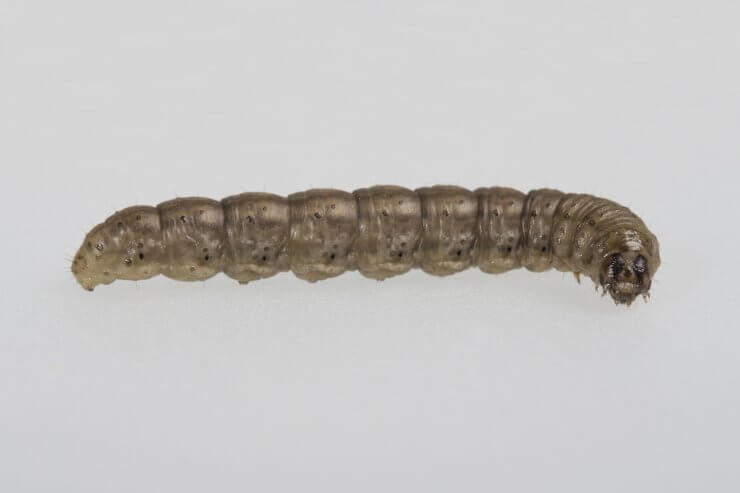
Cutworms can destroy onions if left unchecked
Pests in your onion patch, left unchecked, can damage and destroy your precious onion plants. Keeping a close watch on your plants during regular daily inspections will help you spot any pests before they can do irreparable harm. Healthy onion plants can bounce back from pest damage if you catch the pests early.
Spot the symptoms of onion plant pests
Check leaves, stems, and bulbs for these symptoms that come from pests on the prowl!
On Onion Leaves and Stems
| Symptom | Pest |
| Silvery blotches or scratch-like markings | Onion thrip |
| Yellowing and drooping leaves | Onion fly |
| Plants yellow and die | Seedcorn maggot |
| Leaves or stems cut off at bases | Cutworm |
On Onion Bulb
| Symptom | Pest |
| Maggots in the bulb | Onion fly maggots |
How to treat pests on onion plants
Here are some proven ways to get rid of pests on your onion plants. Choose the best treatment for the type of pests invading your plants.
- Pick off the pests. Use your garden gloves to remove the pests by hand. After removal, destroy pests by drowning them in a bucket of soapy water or crushing them with your foot.
- Apply insecticidal soap. Insecticidal soap is organic. The potassium salts in insecticidal soap help remove an insect’s protective waxes, causing destruction of insect membranes and killing them. Mix the soap with water to create your solution and apply directly to insects on any plants. While insecticidal soap is less apt to affect other organisms, certain plants might be sensitive to the soap and can suffer leaf burn.
- Apply horticultural oils. Combine plant- or petroleum-based oils with water to produce horticultural sprays. Neem oil, for instance, is derived from seed extracts of the neem plant. Oil-based sprays block an insect’s air holes, interfere with an insect’s metabolism, disrupt insect feeding, and inhibit insect growth. Like insecticidal soaps, horticultural oils can cause plant injury if not properly diluted.
- Make your own pest spray. You can make your own pest spray with benign materials. Mix one tablespoon of baking soda, 1/2 teaspoon of a mild dish detergent, and 2 1/2 tablespoons of olive oil in a gallon of water to make a solution that will repel all kinds of bugs, as well as a fungicide for blight and mildew on the onion plant leaves. Shake it well in your bottle before spraying and repeat every week for it to be continuously effective.
- Create a physical barrier. One defense against pests such as cutworms is to deny them access to your onion plants. Wrap the bottom of the stem and leaves with aluminum foil so they can’t get to the leaves in the first place.
- Create a hostile environment (to pests). Clean up damaged plant parts to keep the soil clear and uninviting to pests such as cutworms. Maintain a 3- to 4-foot buffer of dry soil along your garden to make the journey to your onions more trouble than it’s worth. In the fall, give your garden a good tilling to destroy any larvae or pupae in the soil.
- Get physical. Want to keep onion flies from destroying your bulbs? Install some row covers to keep them off your plants. When your plants are still seedlings, you can press the soil down and cover the soil with insect-proof material, like paper or cloth, to keep the onion fly from laying eggs. You can also spread a light layer of sand or wood ash around your plants to deter egg laying.
Do pests attack your onion plants every year? How do you handle removing them—and even preventing them in the first place? Please tell us how you treat your onion plants to avoid pests.


 Previous
Previous

